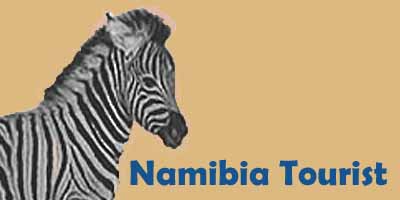Namibia has designated about 19% of the country as “protected areas.” These areas include national parks and reserves. In many of these “protected areas,” there are towns and mining operations and even trophy hunting. In a few coastal parks and reserves, Namibia’s government allows the daily slaughter of Cape fur seal pups for four and a half months.
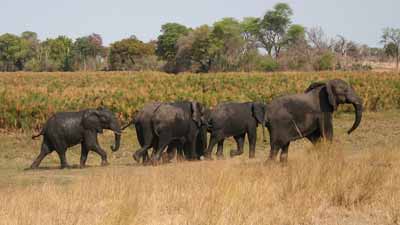
Bwabwata National Park
Bwabwata National Park lies between Botswana and Angola in northeastern Namibia. Many large mammals migrate across this land, including elephants, hippos, zebras, wildebeest, leopards, lions, and cheetahs. This park was created from the combined Mahango and Caprivi Game Parks. Namibia allows trophy hunting in this park. Photo: Marco Schmidt
Bwabwata National Park
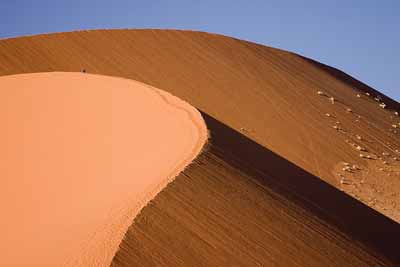
Namib-Naukluft National Park
Namib-Naukluft National Park, which is located south of Dorob National Park and surrounds Walvis Bay, comprises parts of the Namib Desert and the Naukluft mountain range. It has tall sand dunes, made orange by the oxidation of iron in the sand. Though it is mostly arid, it is home to Rüppell’s korhaan, hyenas, and jackals, and other wildlife.
Namib-Naukluft National Park
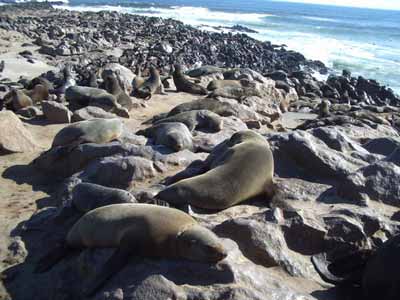
Cape Cross Seal Reserve
Cape Cross Seal Reserve lies along the central coast of Namibia, in a small headland. It is a breeding colony for Cape fur seals. In this seal reserve, along with those at Atlas Bay and Wolf Bay, Cape fur seal pups are beaten and stabbed to death early in the morning each day from July to mid-November. This government-sanctioned massacre is considered a “jobs program” by the Minister of Fisheries and Marine Resources, who is responsible for overseeing it. Tourists are kept away from the beach where pups are separated from their nursing mothers and killed, until mid-morning, after clubbers have cleaned the blood off the beach. Photo: Betty of NYC
Cape Cross Seal Reserve
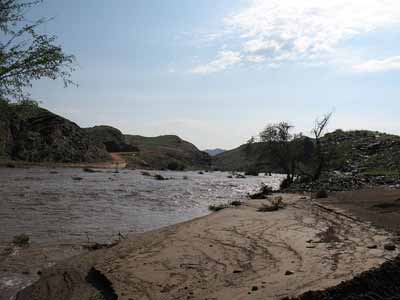
Dorob National Park
Dorob National Park is located along Namibia’s central coast, north of Namib-Naukluft National Park and is frequented by dozens of bird species. Its terrain includes sand dunes, gravel plains, and river beds and deltas. Photo: Anagoria
Dorob National Park
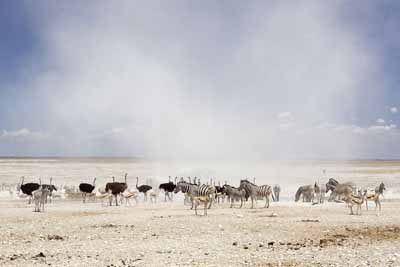
Etosha National Park
Etosha National Park, in northern Namibia, has several different types of terrain, including salt desert/salt pans, savanna woodlands, and dolomite hills. Photo: Yathin S. Krishnappa
Etosha National Park
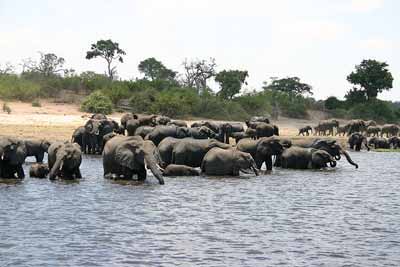
Nkasa Rupara National Park
Nkasa Rupara National Park is located in the eastern Caprivi strip, bordering Botswana. The wetlands are habitat for megafauna such as elephants, buffalo, hippos, crocodiles, lions, leopards, and cheetahs. Hundreds of species of birds also live here, including rare species, such as the wattled crane. The park also has unusual trees, such as the sausage tree.
The Nkasa Rupara park is part of the Kavango Zambezi Transfrontier Conservation area, managed by Namibia, Angola, Botswana, Zambia, and Zimbabwe.Photo: Elephant herd in Kavango Zambezi Transfrontier Conservation Area photo: I Pinz
Nkasa Rupara National Park
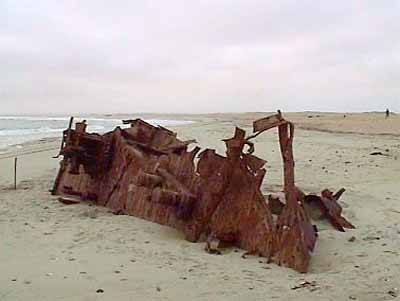
Skeleton Coast
The Skeleton Coast National Park is located north of Dorob National Park and includes the infamous skeleton coast itself, where mariners have run aground for hundreds of years. Rusting old ships can still be seen there as testament to the hazardous conditions of the coast. Along the coast, dense fogs persist much of the year. In addition to the sandy coastline, the park has dunes and rocky outcrops. Wildlife along the coast include Cape fur seals, jackals, and hyenas. Further inland, near the riverbeds, baboons, Springbok, giraffes, lions and the rare black rhinoceros can be seen. Photo: Robert Raderschatt
Skeleton Coast National Park
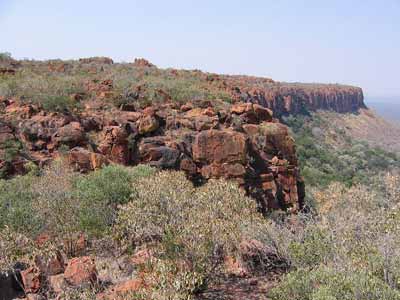
Waterberg National Park
Waterberg National Park is located in central Namibia, roughly between Windhoek and the Etosha Pan. The most striking feature of the park is the Waterberg Plateau, which rises up to 420 m above the plains. This park is home to many species of wildlife, including black rhinos, giraffes, kudu, blue wildebeest, cheetahs, Cape vultures, and rockrunners. Photo: Harald Supfle
Waterberg National Park
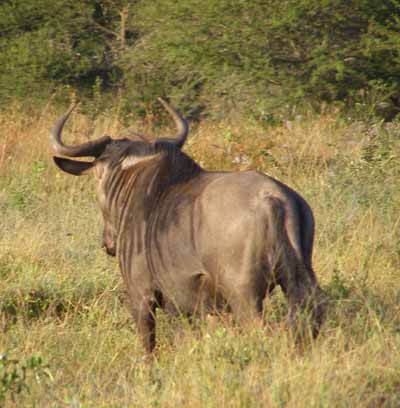
Ehirovipuka Conservancy
Ehirovipuka Conservancy is a nature reserve in northwestern Namibia and is one of the “protected areas” in which trophy hunting is allowed. The government allows hunters to kill dozens of species, including endangered species. Elephants, lions, baboons, hippos, black rhinos, leopards, and many other animals who roam freely in this “conservancy” are killed by hunters for fun. Many of these hunters can be seen posing with their dead or dying victims on websites that run killing tours. Photo: Covalent
Ehirovipuka Conservancy
Share your photos of Namibian natural areas
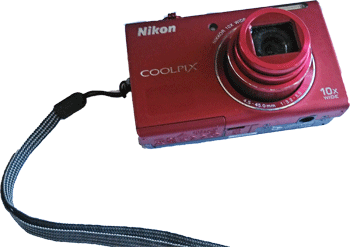
|
Upload files
|
|
|
|
|
|
|
